We have the full snow moon that we can look forward to in the coming week. And thanks to the accidental timing, it will look just as “full” to the unsadded eye on February 11th and 12th for two nights in a row. This is the middle between the two nights.
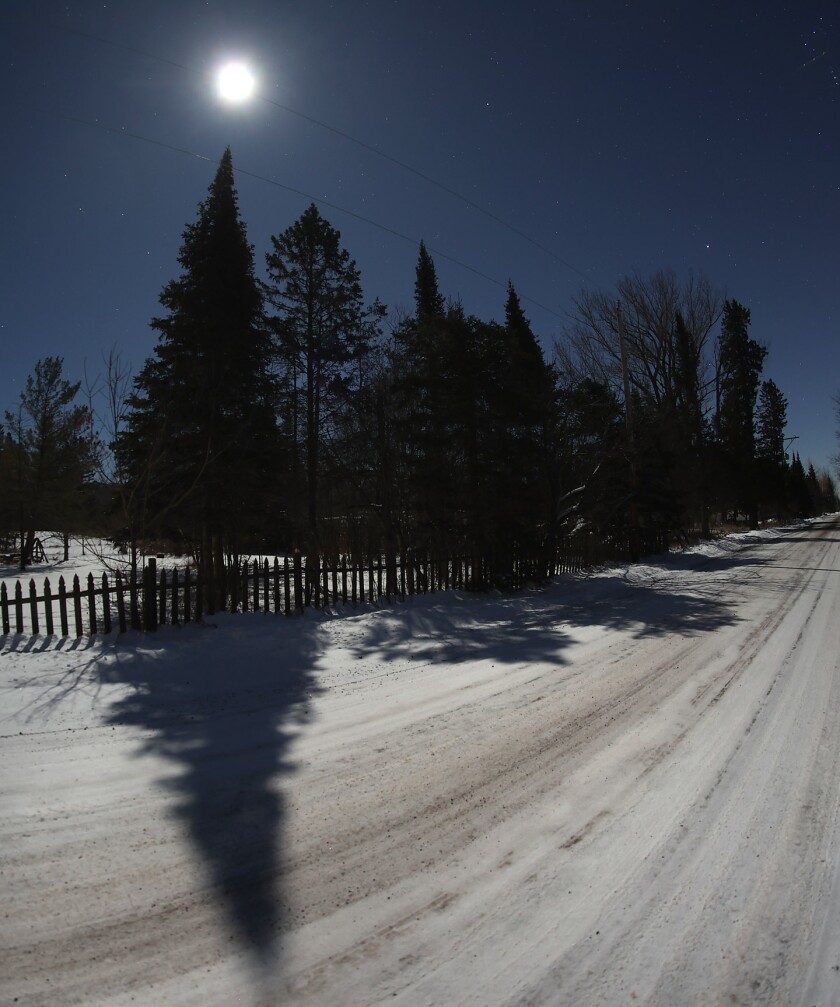
Post / Bob King
With the undivided eye, it becomes difficult, if not impossible to distinguish between the still growing moon on February 11th and the decreasing moon the following evening. But you may notice the difference in binoculars and undoubtedly on a small telescope. Take a look at the lower edge of the moon on the first night. It will have a crispy look that is caused by craters that are still partially in the shade – a sign that it is not quite full. The following evening the rough edge turns to the upper right side of the moon.
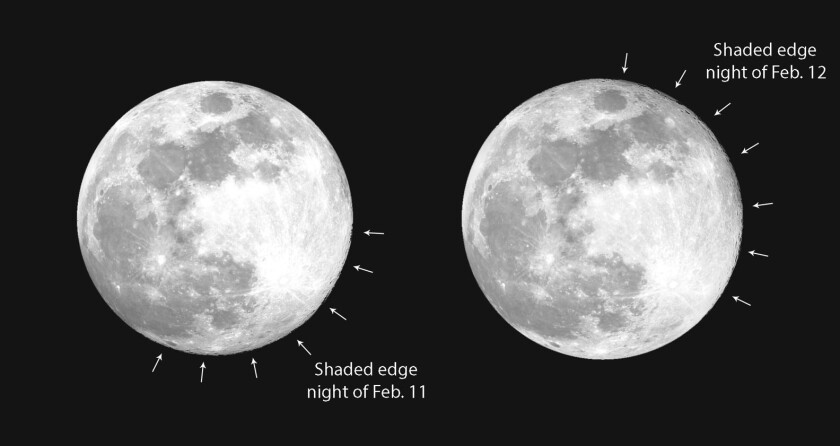
Contributed with additions from Bob King / Stellarium contributed
This shaded edge is called the moon terminator, which separates on the moon day and night. During the growing moon, from crescent to full, it is the line of the further developed sunrise. The moon gradually fills every consecutive night when more of it turns into sunlight. From full to the crescent moon, the terminator marks the line of the progressive sunset – we see less and less moon when it turns into the dark.
The earth also has a terminator, but because our planet rotates so much faster than the moon, the sunrise sound line makes a full path around the globe every 24 hours instead of every 4 weeks as with the moon.
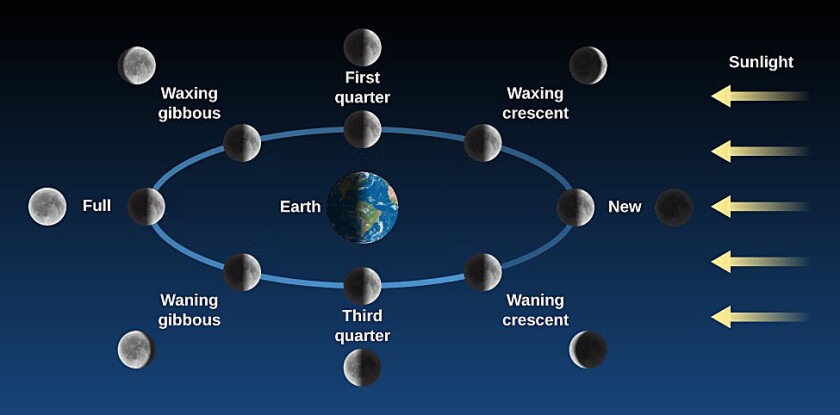
Contribution / modification of a NASA diagram
The full snow moon will rise on February 11th at 4:30 p.m. local time, almost an hour before sunset, in the Duluth area in the northeastern sky. Since the sky is still light, the moon looks pale until after sunset. The following night there will be more than an hour later at 5:43 p.m. (14 minutes after Sunset) and will appear much more dramatic in a darker sky. As soon as it is dark, you can see whether you can see Leos the brightest star only 2 degrees to the upper moon of the moon. If GLARE is a problem, use binoculars.
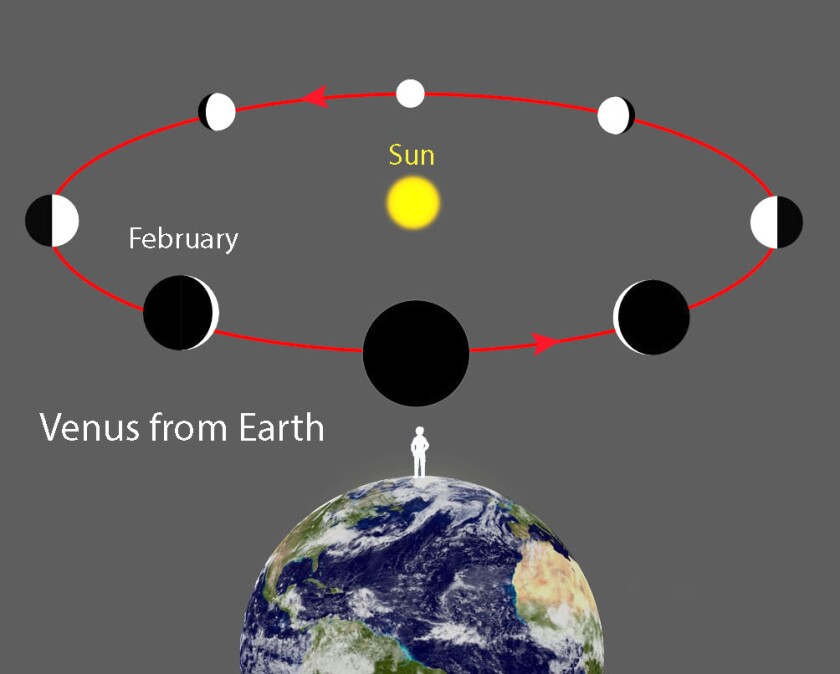
Contribute / Wikipedia, public domain
We also have a moon in heaven, better known as Venus. Like the moon, it shows phases, but for another reason. It circles inside Earth orbit, we see the planet during its entire orbit, while moving around the sun from left to right and front to back. The constantly changing angle of the planet in relation to the sun changes how much Venus we see. Sometimes it is a “full moon”, sometimes it is the thinnest crescent.
In the diagram you will find that Venus looks larger when it is a crescent moon than if it is full. It is easy to understand why. If it is in full phase, the planet is on the opposite side of the sun and much further away. In the crescent phase, it is much closer to the earth on the nearby of the sun.
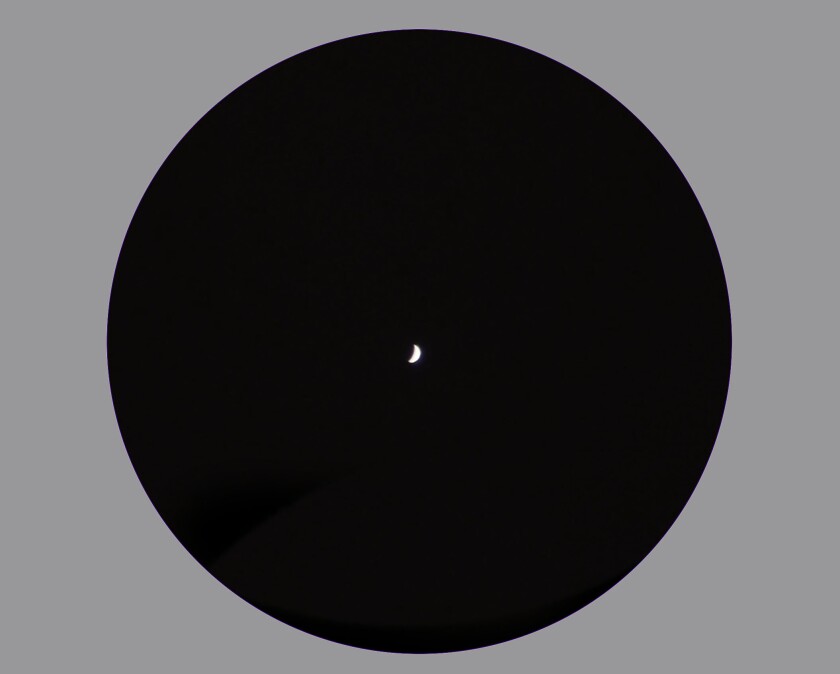
Contributed / piqui diaz
Venus is currently approaching the earth and big enough to see her crescent moon shape in a couple 8x or 10 -fold binoculars. On February 6th I aimed my 8x42s on the planet. Although the crescent was tiny, the shape was obvious. Remember to concentrate sharply and support the binoculars against something to keep it calm. Watch early when the sky is still bluish to minimize the glare of the planet.
Are you looking for a Valentine’s Day gift? Give your love – the weather allows – the planet Venus. February 14 is the day when Venus reaches the greatest brightness of the whole year. In the film It’s a wonderful life George Bailey promised his sweetheart Mary slip the moon:
“What do you want, Mary? What do you want? You want the moon? Just say the word and I will throw it around it and pull it down. “
Take a hint from George and make the lasso.
“Astro” Bob King is a freelance writer and retired photographer for the Duluth News Tribune. You can reach it at Nightsky55@gmail.com.
(Tagstotranslate) astronomy

